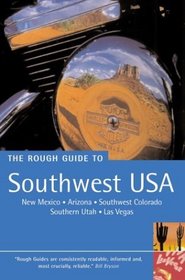Search -
Rough Guide to Southwest USA 3 (Rough Guide Travel Guides)
Rough Guide to Southwest USA 3 - Rough Guide Travel Guides
Author:
INTRODUCTION The Southwest is the most extraordinary and spectacular region of the United States. The splendor and scale of its scenery consistently defies belief – a glorious panoply of cliffs and canyons, buttes and mesas, carved from rocks of every imaginable color, and enriched here by groves of shimmering cottonwoods and aspens, there... more »
Author:
INTRODUCTION The Southwest is the most extraordinary and spectacular region of the United States. The splendor and scale of its scenery consistently defies belief – a glorious panoply of cliffs and canyons, buttes and mesas, carved from rocks of every imaginable color, and enriched here by groves of shimmering cottonwoods and aspens, there... more »
ISBN-13: 9781843530800
ISBN-10: 1843530805
Publication Date: 11/3/2003
Pages: 592
Rating: ?
ISBN-10: 1843530805
Publication Date: 11/3/2003
Pages: 592
Rating: ?
0 stars, based on 0 rating
Genres:
- Travel >> Guidebook Series >> Rough Guide
- Travel >> United States >> Regions >> South >> West South Central
- Travel >> United States >> Regions >> West >> General
- Travel >> United States >> Regions >> West >> Mountain




